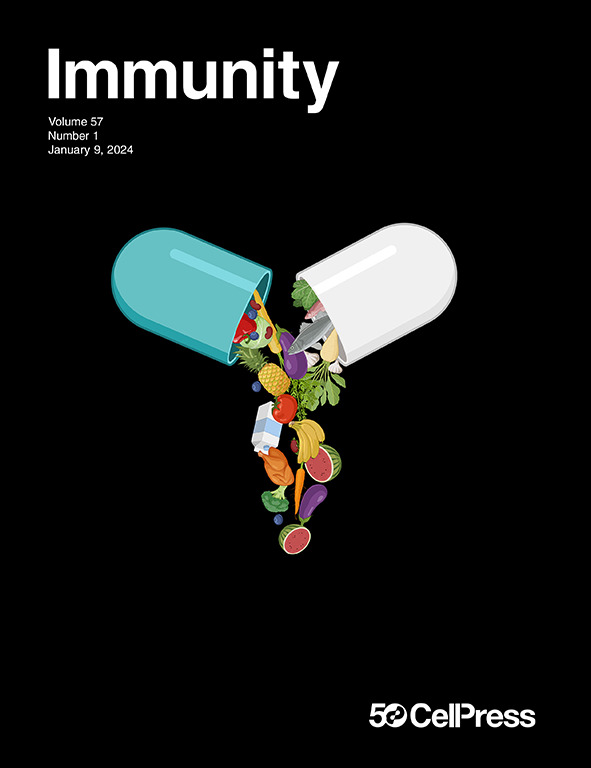Gasdermin C cleavage by Cathepsin S modulates Rab7 vesicles in intestinal epithelial cells to amplify anti-helminth immunity
IF 25.5
1区 医学
Q1 IMMUNOLOGY
引用次数: 0
Abstract
Gasdermins are canonically associated with plasma membrane pore formation and lytic cell death. Gasdermin C (GsdmC), predominantly expressed in intestinal epithelial cells (IECs), seems to operate independently of these canonical roles. Here, we show that activated GsdmC is increased in response to type 2 immunity in the gut, driven by Cathepsin S (CTSS)-mediated cleavage. Although IEC cell death is not the main consequence of GsdmC cleavage, inserting a single amino acid (aa) within the lipid-binding motif to match that of the other gasdermins enhanced GsdmC oligomerization and increased GsdmC-mediated cell death. Mechanistically, instead of localizing to the plasma membrane, we showed that cleaved GsdmC targeted Rab7+ vesicles, such as late endosomes. This modulated lipid droplet accumulation, which promoted goblet cell hyperplasia and type 2 immune responses. These findings demonstrate how GsdmC in IEC protects against helminth infection and expands the role of gasdermins beyond cell death and cytokine release.

组织蛋白酶S切割肠粘膜蛋白C可调节肠上皮细胞的Rab7囊泡,增强抗蠕虫免疫
气真皮层通常与质膜孔形成和溶解性细胞死亡有关。Gasdermin C (GsdmC)主要在肠上皮细胞(IECs)中表达,似乎独立于这些规范的作用。在这里,我们发现激活的GsdmC在响应肠道2型免疫时增加,由组织蛋白酶S (CTSS)介导的裂解驱动。虽然IEC细胞死亡不是GsdmC切割的主要后果,但在脂质结合基序中插入单个氨基酸(aa)以匹配其他gasdermins的氨基酸,可增强GsdmC寡聚化并增加GsdmC介导的细胞死亡。在机制上,我们发现裂解的GsdmC不是定位于质膜,而是靶向Rab7+囊泡,如晚期核内体。这调节了脂滴积累,促进杯状细胞增生和2型免疫反应。这些发现证明了GsdmC在IEC中如何保护寄生虫免受感染,并将气皮素的作用扩展到细胞死亡和细胞因子释放之外。
本文章由计算机程序翻译,如有差异,请以英文原文为准。
求助全文
约1分钟内获得全文
求助全文
来源期刊

Immunity
医学-免疫学
CiteScore
49.40
自引率
2.20%
发文量
205
审稿时长
6 months
期刊介绍:
Immunity is a publication that focuses on publishing significant advancements in research related to immunology. We encourage the submission of studies that offer groundbreaking immunological discoveries, whether at the molecular, cellular, or whole organism level. Topics of interest encompass a wide range, such as cancer, infectious diseases, neuroimmunology, autoimmune diseases, allergies, mucosal immunity, metabolic diseases, and homeostasis.
 求助内容:
求助内容: 应助结果提醒方式:
应助结果提醒方式:


